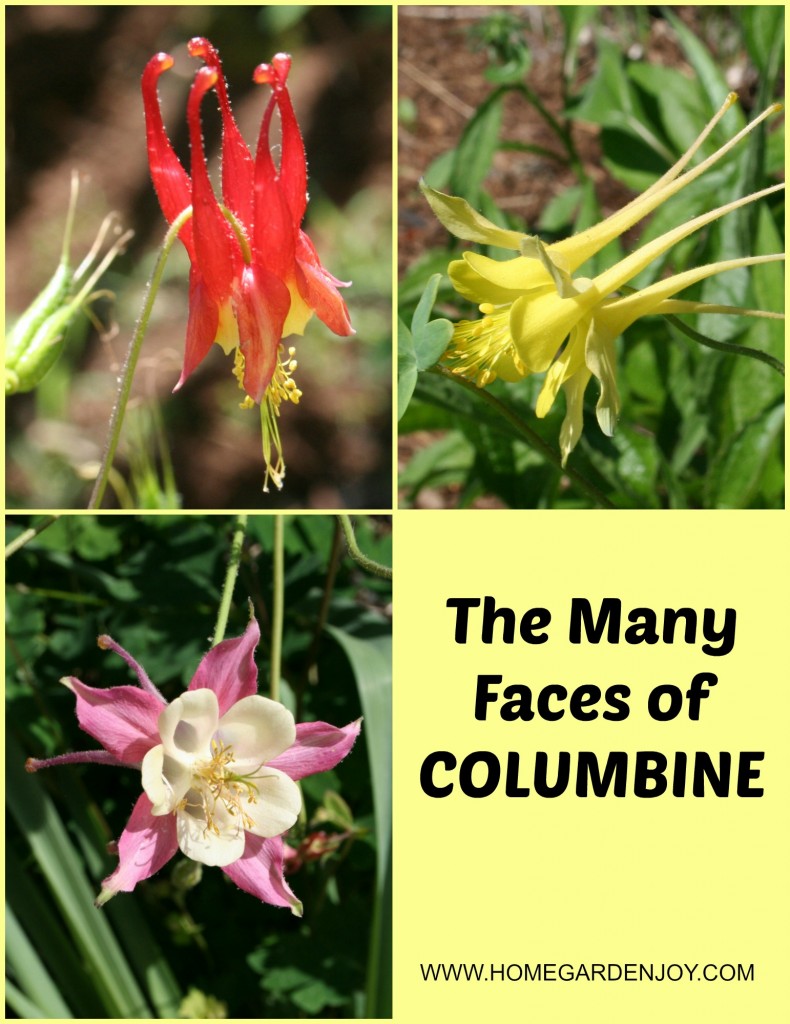
I started my columbine flower collection from seeds, and added only one mature plant, the yellow-flowered variety you see in the pictures here, from a potted plant a few years ago. I can’t quite remember if it was a gift from my friend Helen, who has a gorgeous garden just a few miles away, or a plant I purchased from the garden center. The other plant seem to seed freely throughout my garden, their offspring happily adding to the joyful cacophony of color in the spring garden, but the yellow stubbornly plods along, turning her sunny face to the southern sky from the butterfly garden.
Columbine thrives throughout the United States and is the Colorado state flower. It prefers sun to partial shade. Columbine grows well in almost any soil type, but does prefer a bit of moisture. I’m growing it in my back garden next to the deck, and it loves the area near the hose coupling where of course the hose leaks just a tiny bit! That sure keeps the soil evenly moist, even through our hot Virginia summers.
Sow columbine seeds directly into the garden, or add plants in early spring. Most varieties flower in mid-May, with some continuing into June. Dead-heading, or removing spent blossoms, may extend the flowering season a bit. I like to mulch around my columbine plants to keep the soil evenly moist, but it’s not necessary if you live in an area that gets plenty of rainfall.
I’ve found that it’s best to move columbine plants early in the spring. If you do dig up some of the volunteer seedlings to transplant them into other areas of your garden, be especially judicious in your watering schedule after moving the plants so that they root easily in their new home.
Here are more pictures from my garden today to show you the beauty of columbine flowers.
